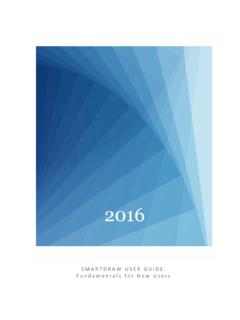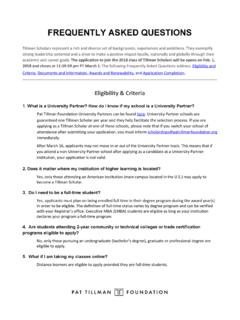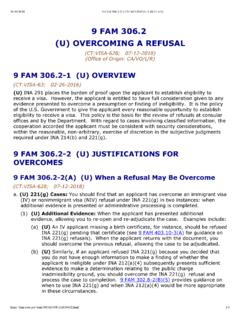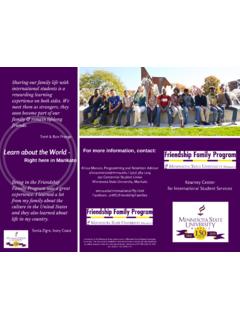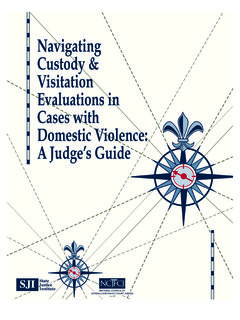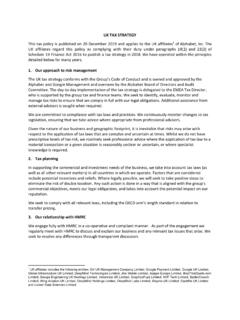Transcription of U . S . G O V E R N M E N T , H E AL T H Y S E L F : I M M ...
1 N A T I O N A L F O U N D A T I O N F O R A M E R I C A N P O L I C YN A T I O N A L F O U N D A T I O N F O R A M E R I C A N P O L I C YN A T I O N A L F O U N D A T I O N F O R A M E R I C A N P O L I C YN A T I O N A L F O U N D A T I O N F O R A M E R I C A N P O L I C Y N F A P P O L I C Y B R I E FN F A P P O L I C Y B R I E FN F A P P O L I C Y B R I E FN F A P P O L I C Y B R I E F N O V E M B E R N O V E M B E R N O V E M B E R N O V E M B E R 2 0 1 22 0 1 22 0 1 22 0 1 2 U . S . G O V E R N M E N T , H E A L T H Y S E L F : I M M I G R A T I O N r e s T R I C T I O N S A N D A M E R I C A S G R O W I N G H E A L T H C A R E N E E D S B Y S T U A R T A N D E R S O N EXECUTIVE SUMMARY The Congress and the executive branch have failed to establish immigration policies that would allow a sufficient number of foreign-born doctors, nurses and other medical personnel to work in the United States.
2 At a time of tremendous need in health care, the United States is saddled with an immigration system designed to prevent, not facilitate, the entry of highly skilled physicians, nurses, physical therapists and other foreign-born medical personnel. The aging population, the demands of the Affordable Care Act (ACA) and the potential benefits brought by medical advances and increased specialization mean America must tap the global talent pool in health care or see its citizens suffer the consequences. This report makes four broad policy recommendations: 1) Expand the number of employment-based green cards so the wait times for skilled immigrants, including nurses, physicians, and physical/occupational therapists, can be measured in weeks or months, rather than in years or decades. 2) Establish a temporary visa that facilitates the entry of foreign nurses.
3 Current temporary visas do not work for the vast majority of foreign nurses and their potential employers. 3) To aid patients in underserved areas and enable more doctors to pursue specialized medical fields expand the Conrad 30 program to include many more physicians per state and in the country as a whole. Also, we should consider policies to overcome the limitations on medical residency slots in the by developing guidelines to allow foreign-trained doctors to practice in the United States if they can demonstrate a high level of expertise. Congress logically should include physicians and medical researchers in biology and chemistry in the definition of Science Technology Engineering and Mathematics (STEM) for exemption from employment-based green card quotas in future legislation. 4) Streamline state licensing and other procedures for foreign medical personnel, including physical therapists and occupational therapists, to help with the nation s long-term health needs.
4 Given the tremendous demand for health care services in the coming years it is not possible for America to meet those needs through purely domestic means. In general, a shortage normally does not last for a long time in a labor market. However, government actions, such as current immigration restrictions, can lead to an undersupply N A T I O N A L F O U N D A T I O N F O R A M E R I C A N P O L I C Y P a g e Government, Heal Thyself: Immigration Restrictions and America s Growing Health Care Needs 2 of specialized labor and leave employers with choices that may not be in the best interests of consumers. In other words, shortages of doctors and nurses in the United States will appear in the form of longer waits for appointments and subpar medical care for Americans, not empty hospital rooms or vacant medical office buildings.
5 Physicians The immigration process sets up significant obstacles for foreign-born doctors. To be granted a license to work as a physician in the United States a foreign national must complete a graduate medical education, which usually means entering on a J-1 visa or an H-1B visa. However, a J-1 visa requires an individual to return to his or her home country unless a waiver is received. J-1 waivers often require a foreign doctor to work in an underserved area in the United States. J-1 waivers can be issued through a government agency and/or via the Conrad 30 program. Under the law, Conrad program J-1 waivers are limited to 30 per state, which means in large states the waivers can be exhausted in a matter of days. Finding a doctor will get increasingly difficult, waits for appointments will grow longer, and more sick people will turn to crowded emergency rooms, according to Ted Epperly, of the American Academy of Family Physicians.
6 The Association of American Medical Colleges estimates that in 2015 the country will have 62,900 fewer doctors than needed, reported the New York Times in discussing the impact of President Obama s health care legislation. And that number will more than double by 2025, as the expansion of insurance coverage and the aging of baby boomers drive up demand for care. Analysts agree that individuals with health insurance are more likely to use medical services and the Congressional Budget Office estimates the Affordable Care Act could insure 30 million people who previously lacked health coverage. Severe physician shortages have already hit children, according to Mark Wietecha, President and Chief Executive of the Children s Hospital Association, which represents more than 220 children s hospitals. Children are struggling to get timely medical care, with some waiting almost four months for subspecialist appointments even in communities served by a children s hospital.
7 The association s survey found, In the most affected specialties, children can wait nearly 15 weeks for appointments in developmental-behavioral medicine and 9 weeks in neurology. Nurses The need for registered nurses (RNs) may surpass that of doctors. According to a 2012 United States Registered Nurse Workforce Report Card and Shortage Forecast, published in the American Journal of Medical Quality, With an aging population, health care demand is growing at an unprecedented pace .. The number of states receiving a grade of D or F for their RN shortage ratio will increase from 5 in 2009 to 30 by 2030, for a N A T I O N A L F O U N D A T I O N F O R A M E R I C A N P O L I C Y P a g e Government, Heal Thyself: Immigration Restrictions and America s Growing Health Care Needs 3 total national deficit of 918,232 RN jobs.
8 There will be significant RN workforce shortages throughout the country in 2030; the western region will have the largest shortage ratio of 389 RN jobs per 100,000. A major problem with attempting to increase the supply of nurses only domestically is finding qualified instructors for nursing schools. But hiring a foreign nurse on a temporary visa is daunting and potentially not even possible, depending on the job requirements and the country of origin. That leaves primarily green cards as the only viable path for most foreign nurses, but the wait for employment-based green cards is currently 5 years or more from most countries. One argument made by critics is the H-1A temporary visas available in the early 1990s resulted in poor treatment of foreign nurses. However, economist Ruth Levine authored a Department of Labor-commissioned study and concluded, There was no evidence that the increased access to foreign labor under the law had negative short-term effects on the wages, benefits or working conditions in area hospitals.
9 In addition, and contrary to common beliefs, we found that foreign nurses were not paid less than nurses and were not exposed to worse working conditions. Unlike other foreign nationals who can work in the United States in H-1B status while waiting for their green cards, typically a foreign nurse must wait overseas. It is a testament to the need for foreign nurses that employers would endure the cost and the wait of at least 5 years until a foreign nurse could begin working in the United States. The problem is not simply overall numbers but the distribution of nurses geographically and the need for specialty nurses, note experts in the field. As economists explain, there is no such thing as a free lunch. The cost of policies that permit too few nurses to work in America is paid for by a greater rate of infection and increased patient mortality.
10 In Medical Care (April 2011), Mary A. Blegen and other researchers found higher nursing care staff hours were associated with lower rates of dying from congestive heart failure, infections, and prolonged lengths of stay. The conclusion: Higher nurse staffing protected patients from poor outcomes. According to a study published In the New England Journal of Medicine (March 2011), "Staffing of RNs (registered nurses) below target levels was associated with increased mortality, which reinforces the need to match staffing with patients needs for nursing care." A Journal of the American Medical Association study found that increasing a nurse s workload from 4 to 8 patients would be accompanied by a 31 percent increase in patient mortality. These effects imply that, all else being equal, substantial decreases in mortality rates could result from increasing registered nurse staffing, especially for patients who develop complications.
